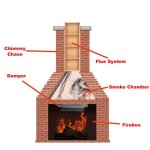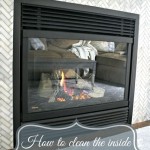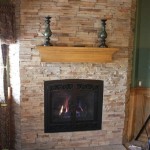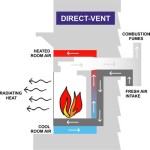Indoor Fireplace Kits: A Comprehensive Guide
Indoor fireplace kits offer a way to introduce the warmth and ambiance of a fireplace into a home without the complexities of constructing a traditional masonry fireplace. These kits provide a pre-engineered solution encompassing the necessary components for a functional and aesthetically pleasing fireplace. The convenience and versatility of fireplace kits make them a popular choice for homeowners seeking to enhance their living spaces.
The market for indoor fireplace kits is diverse, offering options that cater to various needs and preferences. These kits can range from simple electric models to more elaborate gas or gel fuel options. Factors such as heating capacity, installation requirements, aesthetic design, and fuel type play crucial roles in determining the suitability of a specific kit for a given home.
A thorough understanding of the different types of indoor fireplace kits, their installation process, associated costs, and maintenance requirements is essential for making an informed decision. This guide aims to provide a comprehensive overview of these aspects, enabling homeowners to navigate the selection and implementation of an indoor fireplace kit effectively.
Types of Indoor Fireplace Kits
The classification of indoor fireplace kits can be based on several criteria, with the most common being the type of fuel used. Each fuel type presents distinct advantages and disadvantages regarding heating output, environmental impact, installation complexity, and operational costs.
Electric Fireplace Kits: Electric fireplaces are among the most convenient and versatile options available. They typically consist of a firebox unit that houses an electric heating element and a visual display that simulates flames. Electric fireplaces do not require venting, making them easy to install in virtually any room with an electrical outlet. The heating capacity of electric fireplaces is generally lower than that of gas or wood-burning models, but they are sufficient for supplemental heating in smaller spaces. Many electric fireplaces include adjustable flame settings, allowing users to customize the visual display to their liking. Furthermore, electric fireplaces are energy-efficient and produce no emissions, making them an environmentally friendly choice.
Gas Fireplace Kits: Gas fireplace kits utilize natural gas or propane as fuel. They offer a higher heating output compared to electric fireplaces and provide a more realistic flame appearance. Gas fireplaces require venting to the outside to exhaust combustion gases. This venting can be achieved through a direct vent system, a B-vent system, or a vent-free system. Direct vent systems are considered the safest and most efficient option, as they draw combustion air from outside the home and exhaust all combustion gases outside. B-vent systems rely on the natural draft to exhaust combustion gases, while vent-free systems do not require venting. Vent-free gas fireplaces are subject to specific building codes and regulations due to concerns about indoor air quality. Installing a gas fireplace kit typically requires professional assistance to ensure proper gas line connections and venting.
Gel Fuel Fireplace Kits: Gel fuel fireplaces use canisters of isopropyl alcohol-based gel fuel to produce flames. They offer a clean-burning and vent-free operation, making them a convenient option for homes without existing venting systems. Gel fuel fireplaces provide a realistic flame appearance and a moderate amount of heat. However, the cost of gel fuel can be relatively high compared to other fuel types. The canisters are simply placed in the firebox and lit with a match or lighter. While gel fuel fireplaces produce no smoke or ash, they do release a small amount of carbon dioxide and water vapor into the air. It is important to ensure adequate ventilation when using a gel fuel fireplace.
Ethanol Fireplace Kits: Similar to gel fuel fireplaces, ethanol fireplaces use liquid ethanol fuel to create flames. They are also vent-free and provide a clean-burning operation. Ethanol fireplaces offer a modern and stylish aesthetic, with various designs available to suit different décor styles. The heat output of ethanol fireplaces is comparable to that of gel fuel fireplaces. Ethanol fuel is generally more readily available than gel fuel and can be purchased in bulk at a lower cost per unit. As with gel fuel fireplaces, it is important to ensure adequate ventilation when using an ethanol fireplace.
Wood-Burning Fireplace Kits: Wood-burning fireplace kits replicate the traditional fireplace experience. These kits necessitate a chimney for venting smoke and combustion gases. Consequently, they require more significant installation effort compared to vent-free alternatives. Wood-burning fireplaces deliver a high heat output and the distinctive ambiance of a crackling fire. However, they also demand regular maintenance, including chimney cleaning and ash removal. Wood-burning fireplaces are subject to local regulations regarding emissions and wood-burning restrictions.
Key Considerations for Selecting a Fireplace Kit
Choosing the right fireplace kit involves evaluating several factors to ensure it meets your specific needs and preferences.
Heating Needs: The size of the room you intend to heat will determine the required heating capacity of the fireplace. Electric fireplaces are suitable for supplemental heating in smaller rooms, while gas and wood-burning fireplaces offer higher heating outputs for larger spaces. Consider the British Thermal Units (BTU) rating of the fireplace to gauge its heating capacity. As a general guideline, 5,000 BTU can heat approximately 250 square feet.
Installation Requirements: The installation process varies significantly depending on the type of fireplace kit. Electric fireplaces are the easiest to install, requiring only an electrical outlet. Gas and wood-burning fireplaces require venting and gas line connections, which often necessitate professional installation. Consider your DIY skills and budget when assessing the installation requirements. Vent-free options offer easier installation but may be subject to specific building codes.
Aesthetic Design: Fireplace kits are available in a wide range of styles and designs to complement different décor themes. Consider the overall aesthetic of your home and choose a fireplace kit that seamlessly integrates with your existing furniture and décor. Options include traditional, contemporary, rustic, and modern designs. Pay attention to the materials used in the firebox and surround, such as stone, brick, wood, or metal.
Fuel Type and Cost: The fuel type will impact the operating cost of the fireplace. Electric fireplaces have a relatively low operating cost, while gas and wood-burning fireplaces can be more expensive. Gel fuel and ethanol fireplaces have a higher fuel cost compared to gas or wood. Consider the long-term fuel costs when making your decision. Additionally, consider the convenience and availability of each fuel type.
Safety Features: Safety is paramount when selecting a fireplace kit. Look for features such as overheat protection, child safety locks, and tip-over protection. Gas fireplaces should have a safety pilot light that automatically shuts off the gas supply if the flame is extinguished. Ensure that the fireplace kit meets all relevant safety standards and certifications.
Understanding Installation and Maintenance
The proper installation and maintenance of an indoor fireplace kit are crucial for ensuring its safe and efficient operation. Neglecting these aspects can lead to performance issues, safety hazards, and reduced lifespan of the fireplace.
Installation Procedures: Electric fireplace kits typically involve minimal installation. The firebox unit is simply placed against a wall or inserted into an existing fireplace opening. Gas fireplace kits require professional installation to ensure proper gas line connections and venting. Wood-burning fireplace kits also require professional installation of the chimney and firebox. Always follow the manufacturer's instructions carefully and consult with a qualified professional if you have any doubts or concerns.
Venting Requirements: Gas and wood-burning fireplaces require venting to the outside to exhaust combustion gases. Direct vent systems are considered the safest and most efficient option, as they draw combustion air from outside the home and exhaust all combustion gases outside. B-vent systems rely on the natural draft to exhaust combustion gases. Vent-free gas fireplaces are subject to specific building codes and regulations due to concerns about indoor air quality. Ensure that the venting system is properly installed and maintained to prevent carbon monoxide poisoning.
Maintenance Schedules: Regular maintenance is essential for ensuring the safe and efficient operation of your indoor fireplace kit. Electric fireplaces require minimal maintenance, typically involving cleaning the glass screen and dusting the unit. Gas fireplaces require annual inspection and cleaning by a qualified technician to ensure proper gas line connections and venting. Wood-burning fireplaces require regular chimney cleaning to remove creosote buildup, which can cause chimney fires. Ash should be removed from the firebox regularly to prevent it from accumulating and obstructing airflow. Gel fuel and ethanol fireplaces require minimal maintenance, but it is important to clean up any spills or leaks promptly.
Troubleshooting Common Issues: Common issues with indoor fireplace kits include flickering flames, uneven heating, and unusual noises. Flickering flames can be caused by low fuel levels (in gas or ethanol fireplaces) or electrical issues (in electric fireplaces). Uneven heating can be caused by a malfunctioning heating element or improper venting. Unusual noises can be caused by loose components or obstructions in the venting system. Consult the manufacturer's troubleshooting guide or contact a qualified technician for assistance in resolving these issues.
Safety Precautions: Always follow safety precautions when operating and maintaining your indoor fireplace kit. Never leave a burning fireplace unattended. Keep flammable materials away from the fireplace. Ensure that the fireplace is properly vented and that carbon monoxide detectors are installed in your home. Regularly inspect the fireplace for any signs of damage or malfunction. If you suspect a gas leak, immediately evacuate the premises and contact your gas company or a qualified technician.
The information provided in this guide offers a starting point for exploring the world of indoor fireplace kits. Further research and consultation with professionals are always recommended before making a purchase decision.

Indoor Fireplace Kits 36 And 42

Temp Cast Indoor Masonry Fireplace And Oven Combo Patio Outdoor Furnishings

Masonry Fireplace Kits Prefabricated Mason Lite

Masonry Fireplace Kits Prefabricated Mason Lite

Indoor Fireplace Kit Orco

Corner Wood Burning Kiva Fireplace Kit Orno 10 Capo Fireside

Rumford Fireplace Kits For Indoor Fireplaces And Outdoor

White 52 Inch X 39 Wood Fireplace Mantel Surround Kit With Shelf And Trim Essex From Mantels Direct Poplar Wooden Chimney Com

Masonry Fireplace Kits Prefabricated Capo Artisan Series

Masonry Fireplace Kits Prefabricated Capo Artisan Series
Related Posts








